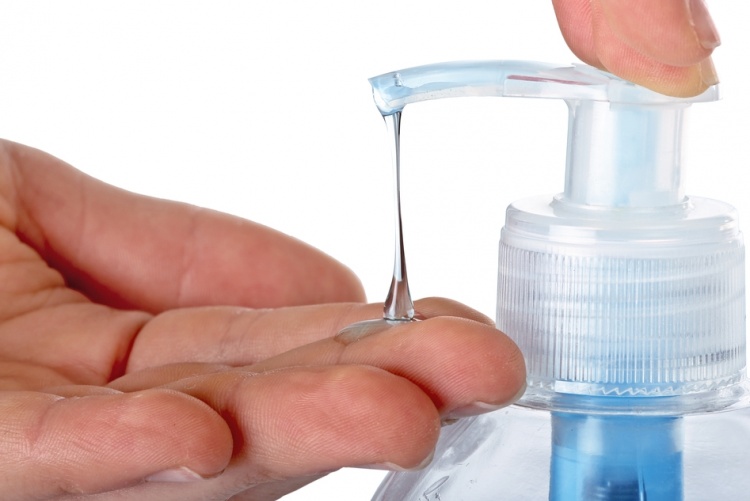Hand sanitizers are one of the key tools being utilized to control the spread of the novel SARS-CoV-2 (coronavirus). The principle component and active ingredient of hand sanitizers that are recommended for coronaviruses is alcohol at a concentration of at least 60% (v/v). The two formulations developed by the World Health Organization (WHO) are based on either ethanol or isopropyl alcohol. The WHO formulas also include hydrogen peroxide and glycerin as a humectant. Commercial hand sanitizers may contain other additives such as polymeric thickeners (e.g., Carbomer), fragrances and colors. Thickeners are added to form gels which facilitate application on the hands without spillage or run-off. Most of the hand sanitizers available in stores locally are gels of varying viscosities with common pack sizes ranging from 50 to 500 milliliters. These include both locally manufactured and imported products. A variety of dispensing closures are utilized including flip-top caps, disc-top caps, push-pump and spray-pump dispensers. Costs for these products vary widely with some retailing for as much as Ksh. 1000 - 1500 for 500 mL.
While alcohol-based sanitizers are suitable alternatives to soap and water, they do have their own specific set of disadvantages. Intentional or accidental ingestion of sanitizers leading to poisoning has been reported. The ingestion risk is further increased, if the type of alcohol in the sanitizer is not ethanol or if the product contains non-potable additives. The other disadvantage of alcohol-based sanitizers is the flammability risk. An individual who is cooking for example, must be careful not to use a sanitizer and then place their hands near an open flame or direct heat source as the alcohol may ignite if the skin is still wet.
Proper labelling of alcohol-based sanitizers is extremely important. In order for customers to easily identify products that meet the recommended 60 percent alcohol minimum, manufacturers of alcohol-based sanitizer should indicate the specific alcohol content of the sanitizer on the label. The addition of flammability and unfit for human consumption warnings to the label are necessary to increase customer awareness of these risks which helps to improve product safety. The list of ingredients, directions for use, warnings to avoid eye contact and keep out of reach of children should also be included. Having the ingredients on the label assists healthcare providers assess treatment options in the case of product ingestion. Furthermore, it assists in identification of ingredients the users may be allergic to. From a legal standpoint, manufacturers should not make claims that are unsubstantiated. If a manufacturer indicates that their product kills a specific percentage or type of microbes, they should be aware that unless they have supporting data, regulatory agencies may legally challenge these claims as has happened in the United States for the manufacturer of the popular Purell hand sanitizers.
The label consists of two components namely, Principal Display Panel and Product Facts Label. [Click here to see labeling requirements for hand sanitizers ]
Quality control (QC) of hand sanitizers should be carried at two levels – pre-production and post-production. Pre-production QC is designed to ensure that the raw materials for the production process conform with specifications. Final product release however, should be carried out with more specific tests such as Gas Chromatography (for alcohol content) and titration (for hydrogen peroxide content) after which a certificate of analysis issued. These procedures require heavy investment in analytical equipment and manpower, which is necessary to provide evidence that products in circulation are quality assured. Use of non-specific methods of analysis such alcoholmeters, hydrometers or pycnometers may not be appropriate for production inputs and the final product. These apparatus simply operate on density differences, which may not detect adulteration with non-approved alcohols such as methanol. The Kenya Bureau of Standards specifications for hand sanitizers, KS EAS 789:2013 standard rely on these physical methods for QC. With the increased use of alcohol-based hand sanitizers, there is a greater need for specific QC tests for quality evaluation of these products.
Article by: Nasser Nyamweya (lecturer) and Kennedy Abuga (associate professor), School of Pharmacy at the University of Nairobi.
- Log in to post comments

